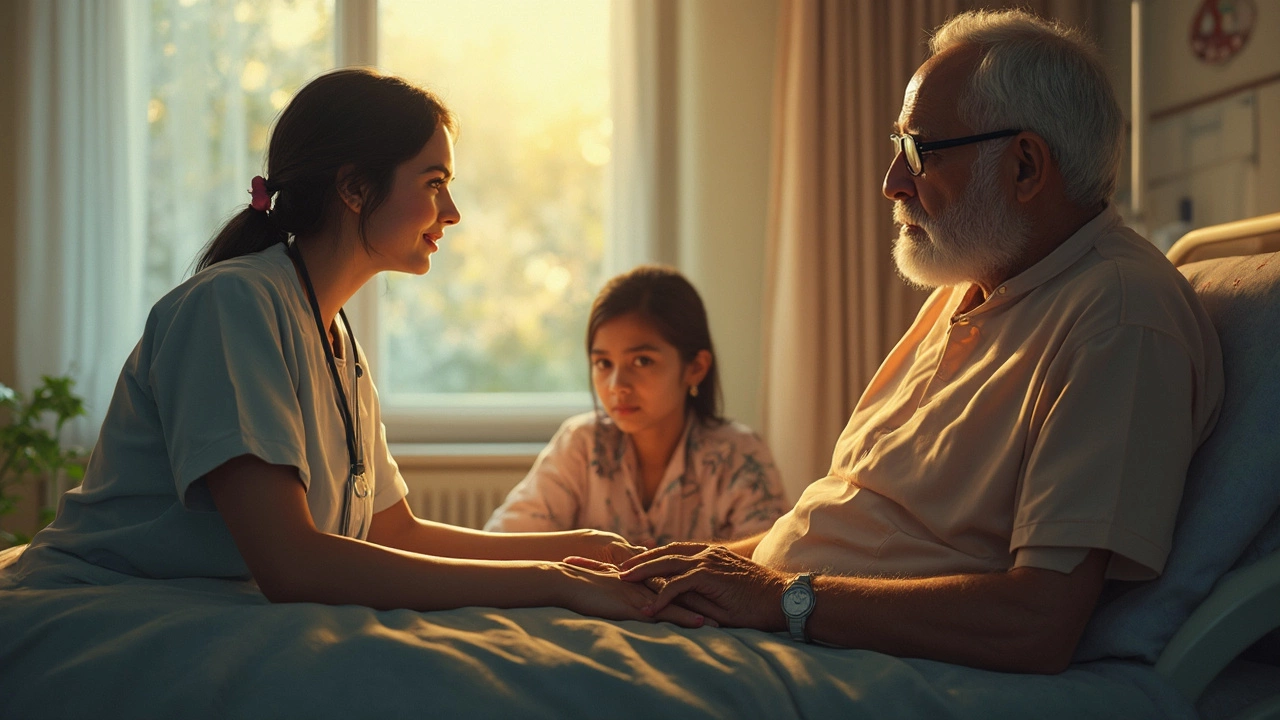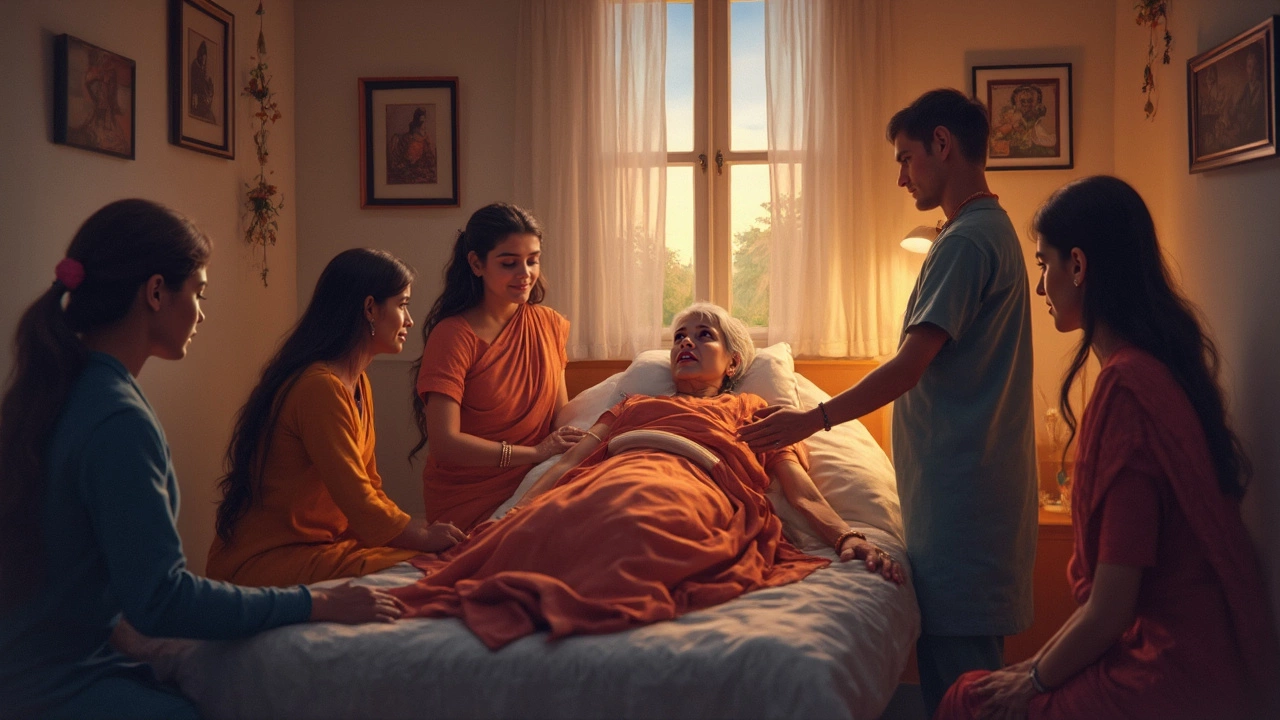Death isn’t a subject most people like to think about, but cancer doesn’t give you much choice. When cancer is in its late stages, the body often stops playing by the usual rules. Even stubborn, tough folks notice something is off. Maybe the energy just vanishes one day or everyday things—like eating or walking—turn into monstrous challenges. As uncomfortable as it sounds, noticing the early signals of the body shutting down from cancer isn’t just for doctors. Anyone caring for someone with advanced cancer, or fighting it themselves, can spot these red flags. Early awareness can give time to prepare, reduce pain, and offer a bit more control in an uncontrollable situation.
The Most Common Physical Warning Signs
Most people imagine cancer’s endgame as a single dramatic event. The truth: It’s usually a slow unwinding, with the body sending out lots of clues beforehand. If you know what to watch for, those clues start to make sense. Fatigue almost always tops the chart. We’re not talking about regular tiredness—this is bone-deep exhaustion that sleep does nothing to fix. Appetite disappears because the body simply can’t digest food well anymore. Even favorite foods become unappealing and tastes change. Swallowing may get tough, too, not because of picky taste buds, but because cancer can impact the muscles and nerves in charge of that simple act.
Pain grows, sometimes quickly, sometimes gradually. It can crop up anywhere the tumor is growing or pressing on nerves. Don’t forget odd physical changes in the skin—gray, blue, or blotchy patches—especially on fingers, toes, or lips. That’s a signal that blood isn’t circulating right. Some people get swelling in their arms or legs called edema, another sign blood flow and lymphatic drainage are getting interrupted.
Bathroom habits go haywire. Urinating less, sometimes barely at all, happens as the body draws all the fluids in for vital circulation. Bowels tend to slow down or stop entirely—the gut just isn’t moving as it should. You’ll also notice body temperature swinging wildly: suddenly cold hands and feet, then feverish moments, as the body’s internal thermostat crumbles. Labored breathing is a big one. Breaths can be very fast, then painfully slow, sometimes even with long pauses in between.
Check out this handy table for a quick scan of what changes are most common:
| Warning Sign | What It Means | How Common? |
|---|---|---|
| Fatigue | Severe energy loss | Very common |
| Loss of appetite | Minimal interest in food/drink | Very common |
| Changes in skin color/temperature | Pale, mottled, cool extremities | Common |
| Swallowing problems | Trouble eating or drinking | Fairly common |
| Pain (new/increased) | Tumor pressing on nerves/organs | Very common |
| Breathing changes | Irregular, rattling, or labored breaths | Very common |
| Urine decrease | Less or no urine output | Common |
| Edema | Swollen hands/feet/limbs | Common |
| Confusion/delirium | Changes in thinking, clarity | Common |
It’s not unusual to see more than one of these signs happening at the same time, especially as things move toward the final stage.
Emotional and Mental Changes to Expect
It’s easy to focus just on physical warning signs, but the mind goes through rough terrain as well. Sudden confusion, restlessness, or hallucinations sometimes appear, and it’s not always because of medication. A person who was sharp and aware might start talking about things that aren’t there, or get easily agitated, especially at night. This can really freak out loved ones, but it’s a normal part of the dying process. The brain simply gets less oxygen as the heart weakens and the body slows down.
Sometimes the mind drifts in and out. There are days when someone hardly wakes up at all, and others where they’re alert but seem to live in a different reality. These mental changes can come and go over hours or days. Some people get very withdrawn, even if they weren’t like that before. Don’t take this personally—social withdrawal is the mind’s way of preparing for the end. If someone starts seeming uninterested in visitors or stops responding to things that used to matter, it’s not rudeness or depression; it’s the brain shutting down.
Agitation is common, too. People may pick at blankets, fidget, or make strange motions with their hands. Experts call this “terminal restlessness.” Occasionally, folks get a burst of energy shortly before dying—a final rally that often surprises everyone. It’s usually brief but can be a chance for goodbyes. Caregivers should be ready for emotional rollercoasters. It helps to keep things calm, speak softly, and try not to argue or correct the person if they say odd things.
If you notice these changes, remember they are part of the process and not a sign of being “crazy.” You can ask the medical team for help; sometimes medications can reduce extreme confusion or agitation. But for most, gentle reassurance and a peaceful environment matter most.

Practical Care Tips for the Final Stage
Watching these changes isn’t easy—no question about it. But there are practical ways to make the last days and weeks more comfortable. First, pain control matters. Morphine or other strong painkillers can be essential, and aren’t just for the very last breath. Don’t be afraid to use them when nurses or doctors say it’s time. Hydration is tricky. Don’t force fluids when the body clearly has no interest; it can cause more discomfort, like choking. Using swabs to keep lips and mouth moist is usually enough. When appetite disappears, stop pushing food. The body doesn’t need it, and gentle care works better than constant coaxing.
Keep the room quiet and the lighting soft. Familiar music can soothe. If you notice rapid, shallow, or “rattling” breathing—a common sign called the “death rattle”—raise the head of the bed or turn the person gently to their side. This can sometimes help, at least for a while. Moisturize dry skin with gentle lotions, and change bedding regularly to prevent sores. Keep talking to the person, even if they seem asleep, because hearing is often the last sense to go.
Good hygiene counts. Use soft wipes, and reposition the person every couple of hours if possible to prevent discomfort. Hospice professionals can help set up comfort measures at home, and they know tons of little tricks for everything from proper pillow angles to creating a peaceful vibe. And if you’re a friend or family member, take turns and rest. Burnout helps no one.
When to Call for Medical Help
Just because someone is dying doesn’t mean they have to suffer. Many people don’t realize that hospice or palliative care teams offer 24/7 advice, even for minor problems. You should definitely call the medical team if pain breaks through and doesn’t improve, or if someone gets severe shortness of breath or distress that simple repositioning won’t help. New seizures, bleeding, or signs of infection (like raging fever or sudden confusion) also deserve a call. They can help with new medication, devices to make breathing easier, or just coach you through tough spots.
Don’t wait for the “perfect time” to bring in hospice—studies show families often wish they’d called sooner. Hospice isn’t just for the last 48 hours; it can offer months of extra help. If you ever feel uncertain or overwhelmed, call the nurse or doctor. There’s no shame in needing backup in these moments. Trust your gut—if something feels off, you’re probably right. Even if death is expected, nobody should have to guess alone when it's time for help.

Facts and Myths About Dying from Cancer
Lots of myths about dying from cancer still get passed around, making things harder for patients and families. One big myth is that dying from cancer is always painful. Yes, pain is common, but with modern medications and palliative care, suffering can be managed well for most people. Another tall tale: “If we stop food or water, we’re starving them.” That’s absolutely not true in the final phase—eating and drinking often cause more trouble, and lack of appetite is the body’s own signal to slow down.
Many believe people always slip away quietly in their sleep. But it’s rarely so predictable. Everyone’s end-of-life journey with cancer looks a bit different—a reflection of their health, the cancer type, and their personality. While most people do get weaker and quieter, others may experience periods of agitation or short bursts of energy. Folks have heard stories about “seeing the light” or having visions, too. These experiences are more common than you’d think; experts say nearly one in three people near death talk about seeing deceased loved ones, feeling lifted, or having intense dreams. This often comforts them, even if it puzzles families.
Finally, don’t buy the idea that you’re just supposed to “tough it out” without help. Support is out there. Nurses know a million ways to ease discomfort. Small touches—a favorite photo, a relaxing song, gentle massage—can make a huge difference. Remember, what you’re experiencing is shared by millions. According to 2024 global stats, over 9 million people die annually from cancer. While the journey is different for each person, the warning signs are surprisingly universal, and knowing them early opens the door to a more peaceful exit.
June 23 2025 0
Write a comment